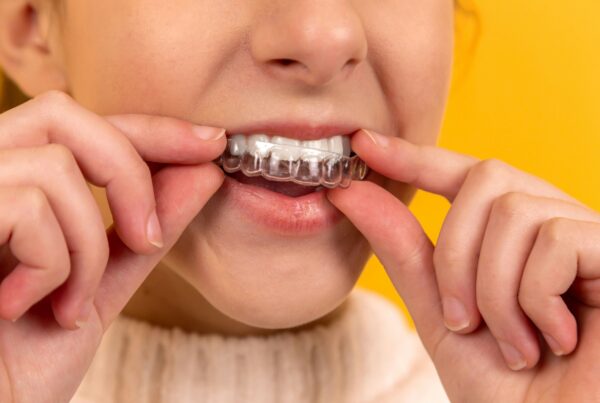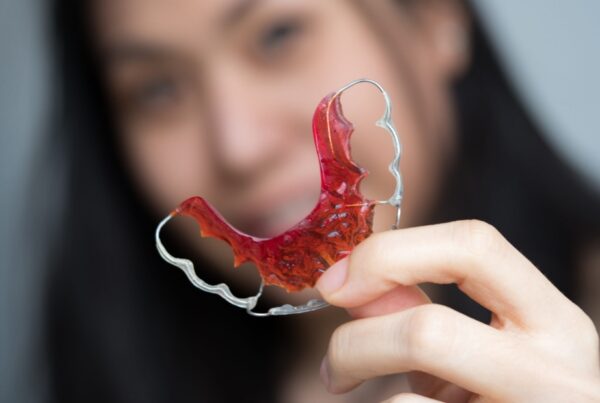If you’re about to have your braces removed, no doubt you’ll be pretty happy. After all, they’ve probably been an unwelcome resident of your mouth for months, maybe years. Well, don’t get too carried away — your treatment isn’t over yet. You’ll still need to wear a retainer.
Why wear a retainer?
Your orthodontist has probably spoken to you about retainers. But if not, let me explain.
In days gone by, once your braces were removed, that was it. However, we now know that retainers are important for keeping your teeth in position.
You see, braces work by applying pressure on your teeth to make them straight. However, when your braces are removed, your teeth still have an inclination to move make to their original crooked positions — it takes time for your mouth to adapt.
Wearing a retainer is a crucial part of your treatment. If your orthodontist tells you to wear one, do it — if you don’t, your teeth will move out of alignment and all the hard work that you and your orthodontist has achieved will be wasted.
How long should I wear a retainer?
Unfortunately, the answer to this question isn’t straight forward — it depends on your situation. When your braces are removed, your orthodontist will make an assessment of your smile, teeth and bone structure. Normally a patient wears a retainer day and night for 6 to12 months. Then, they are usually able to cut down to just wearing it at night for 6 to 12 months.
Without wanting to scare you, ideally, wearing a retainer should be a life-long commitment. However, this may mean just wearing it 1 to 2 nights per week, long term.
Different kinds of retainers
There are three kinds of retainers:
1. Metal retainers (bonded retainers) — these are thin strips of metal going across your teeth and are glued to your teeth with dental resin. These are usually worn long-term.
2. Plates — impressions are made of your teeth. This involves your orthodontist filling a tray with a putty-like substance and placing a tray into your mouth and over your top teeth. These are then used to make a special individual plate that fits only you.
3. Clear trays — once the impressions have been made, clear retainers will be made for you — one for your top teeth and one for your bottom teeth. If you are a habitual tooth grinder, clear retainers are good for protecting the surface of your teeth.
Your orthodontist will work out which retainer(s) is best for you after your braces have been removed.
How do I look after my retainer?
Your mouth is home to bacteria, plaque and left over bits of food. So, you should clean your retainer daily. However, not all retainers are cleaned the same way (there are some retainers that you shouldn’t clean with toothpaste, for example), so ask your orthodontist about what’s best for you.
Did you enjoy this post? If so, please share.


